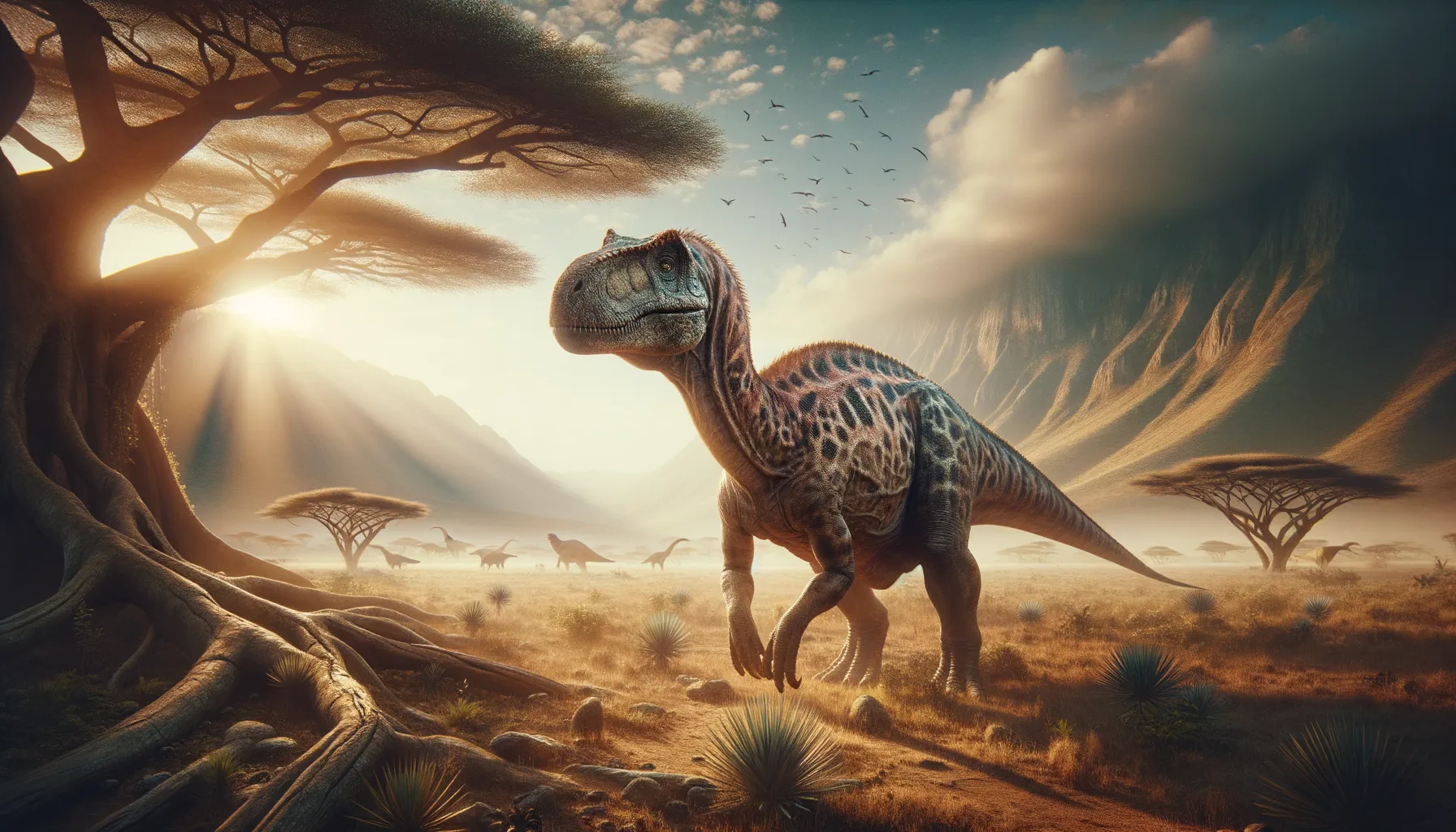
Nyasasaurus
A trailblazer in dinosaur evolution.
Period
Triassic
Length
Roughly 2 to 3 meters long.
Height
Estimated to be around 1 meter tall.
Weight
Approximately 20 to 60 kg.
Nyasasaurus is potentially one of the oldest known dinosaur-like animals, dating back to the Middle Triassic Period, around 240 million years ago. This creature was discovered in Tanzania and has helped scientists understand the early evolution of dinosaurs. While relatively small and slender compared to later giants, Nyasasaurus played a crucial role as a pioneer among prehistoric reptiles.
Diet
Nyasasaurus likely fed on small plants and insects. As an early dinosaur-like animal, its diet was simple, supporting a modest energy requirement.
Hunting
Nyasasaurus was not known for aggressive hunting. Its small size and presumed lack of speed suggest it scavenged or fed on plants, avoiding conflicts with other animals.
Environmental challenges
Living in the Triassic period, Nyasasaurus faced a world in transition with changing climates and landscapes. Predators were a constant threat, likely larger reptiles or early dinosaur ancestors. Additionally, the competition for food could have been fierce, requiring Nyasasaurus to adapt its diet to available resources.
Speed
Estimated to be relatively slow.
Lifespan
Exact lifespan is unknown.
First discovery
Described in the 1950s from Tanzanian fossils.
Fun Facts
- Nyasasaurus is believed to be one of the earliest known dinosaurs, possibly dating back over 240 million years.
- Fossils of Nyasasaurus were first discovered in Tanzania, near the shores of Lake Nyasa, now known as Lake Malawi.
- Nyasasaurus remains were first found in the 1930s, but for many years, scientists were uncertain about its classification as a dinosaur.
- This dinosaur was relatively small, estimated to be about three meters long from nose to tail.
- Nyasasaurus is thought to have walked on two legs, similar to later theropod dinosaurs like T. Rex.
- The discovery of Nyasasaurus has provided crucial insights into the understanding of dinosaur evolution and when these creatures started to appear on Earth.
Growth and Development
Nyasasaurus experienced a life cycle that was likely moderate, with periods of slow growth. Like many early reptiles, it likely laid eggs, though specific patterns of growth remain a mystery. Its development played a crucial role in the adaptive strategies that would later be seen in dinosaurs.
Habitat
Nyasasaurus inhabited semi-arid regions, possibly with woodlands and open plains, allowing explorers like it to roam and forage. These environments provided food and safety, though water sources and food supplies might have fluctuated with seasons. Its adaptability to such diverse habitats highlights its survival capabilities.
Interaction with other species
Nyasasaurus shared its habitat with other early reptiles, leading to both competition and opportunities. While it might have cooperated for resources, it also had to avoid becoming prey. The ecosystem it lived in was complex, providing both threats and alliances.
Natural lifespan
Its natural lifespan remains uncertain, estimated at several years.
Reproduction
Likely laying eggs like many reptiles, Nyasasaurus' reproductive behavior remains speculative. Nesting could have involved simple nests in safe areas. Reproduction would have played a key role in its population sustainability, adapting to the survival needs of its time.
Social behaviour
Nyasasaurus might have been solitary or lived in small groups, facilitating foraging and protection. Interaction within these groups could have been limited but crucial for survival. Social structures were likely primitive compared to later dinosaur societies.
Fossil locations
The primary fossils of Nyasasaurus have been found in Tanzania, offering key insights into early dinosaur evolution. These fossils help scientists piece together the Triassic ecosystem. Discoveries from this region continue to elucidate the prehistoric landscape and its diverse inhabitants.
